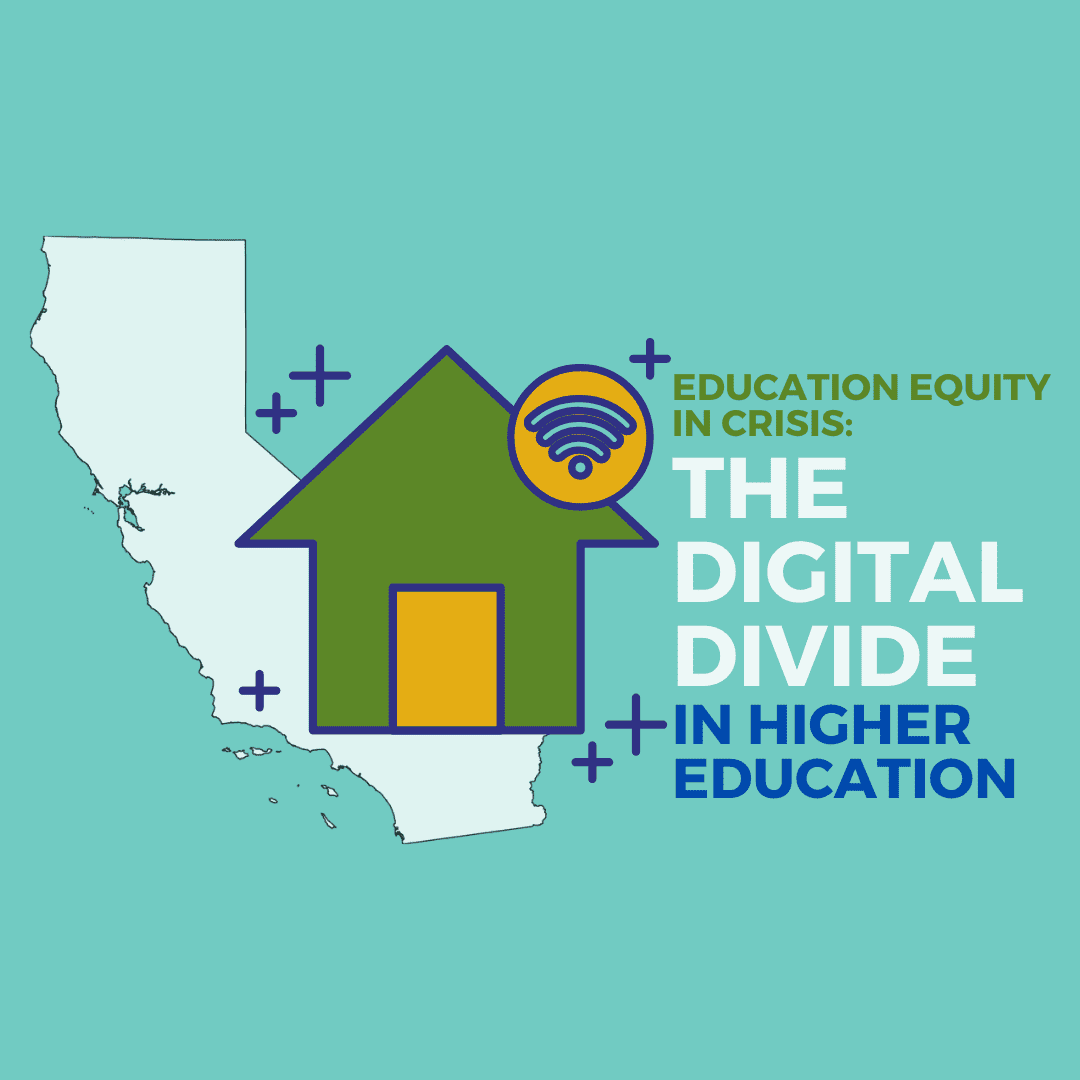The COVID-19 pandemic continues to take a heavy toll academically, emotionally, and financially on college students across the state. Our spring 2020 poll of higher education students revealed that the initial transition to remote learning was extremely disruptive, especially for students from lower income households and students of color.
The vast majority of California college campuses are fully or partially remote for Fall 2020 semester. The California State University (CSU) system, which awards around half of all California’s bachelor’s degrees, has already announced plans to remain fully remote through the 2020-21 academic year. The shift to online learning has prompted many students to put their pursuit of higher education on pause: 82 percent of California college students that are not returning this semester cited uncertainty about online learning or new class formats as the reason they are taking time off.
Access to adequate connectivity and technology plays a critical role in that decision. We know from the statewide poll that the Education-Trust West conducted this past Spring that:
- 13 percent of students of color and 14 percent of students from lower income households in California lack internet access
- 12 percent of students of color and 15 percent of students from lower income households lack a device to access distance learning
Some bright spots have emerged, like the California Connects program at the community college level that has distributed over 30,000 Chromebooks and 5,000 internet hotspots to students, but there is still work to be done to close the digital divide.
The map below paints a picture of digital access for college students across the state. These numbers are estimates based on available data from the Integrated Postsecondary Education Data System (IPEDS). Based on our statewide higher poll, we projected the percentage of students from lower income households and students of color without internet and device access:
- More than 102,000 college students from lower income households and 145,000 students of color may lack access to the internet.
- More than 109,000 students from lower income households and almost 134,000 students of color may lack access to a device to adequately engage in distance learning.
We hope state and institutional leaders use this map to advocate for resources to ensure that every student has access to technology and connectivity to effectively engage with distance learning.
View county-specific data by scrolling over areas on the map below:
View map in Tableau
The colors on this map illustrate an institution’s projected “digital equity rank” based on the following factors:
- Percentage of students that received federal (Pell Grant), state, or local financial aid
- Percentage of students of color enrolled
- Percentage of part-time students enrolled
- Estimated percentage of students from low-income households and students of color without internet access
- Estimated percentage of students from low-income households and students of color without internet access
Each institution received a need score from 1-5 (low to high) on their percentile rank statewide on each of these factors. The rankings were then averaged to calculate an overall digital equity rank. Institutions shaded blue are estimated to have the largest digital gaps and the greatest need for resources. The percent of students receiving Pell Grants is used throughout as a proxy for low-income.
The colors on this map illustrate an institution’s projected “digital equity rank” based on the following factors:
- Percentage of students that received federal (Pell Grant), state, or local financial aid
- Percentage of students of color enrolled
- Percentage of part-time students enrolled
- Estimated percentage of students from low-income households and students of color without internet access
- Estimated percentage of students from low-income households and students of color without internet access
Each institution received a need score from 1-5 (low to high) on their percentile rank statewide on each of these factors. The rankings were then averaged to calculate an overall digital equity rank. Institutions shaded blue are estimated to have the largest digital gaps and the greatest need for resources. The percent of students receiving Pell Grants is used throughout as a proxy for low-income.
What You Can Do
In this current reality of distance learning, it is critical that every college student in California have access to technology and the internet. Racial background and income status should not be a barrier to distance learning. We urge state and campus leaders to consider the following action steps as they explore this tool and make important decisions about how to implement distance learning:0
The Governor and State leaders must:
- Establish a public-private partnership with internet service providers to guarantee free/reduced priced broadband connectivity.
- Invest in long-term broadband connectivity solutions that build out future proof networks.
Campus leaders are urged to:
- Report accurate data on digital equity issues on individual campuses by:
- Completing our digital equity survey and agreeing to release it publicly.
- Sharing stories of success in closing the digital divide on your campus via our digital equity survey so we can highlight solutions to bridging the divide.
- Click here to take the digital equity survey now!

This digital equity map was made possible through the generous support of the Michelson 20MM Foundation.





